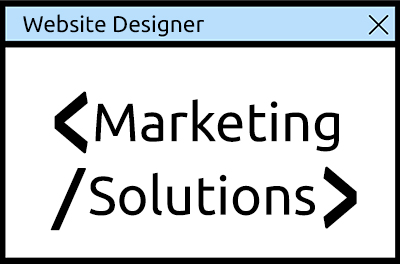Are you tired of managing your website with a clunky, outdated system that makes every update feel like a headache? If so, it’s time to streamline your web presence with the help of content management systems (CMS). With CMS, updating and maintaining your website doesn’t have to be a daunting task. Instead, you can focus on creating engaging content and delivering an exceptional user experience. In this blog post, we’ll explore how CMS revolutionises website design and why it’s time for you to make the switch!
What are Content Management Systems?
A content management system (CMS) is a software application or set of related programs that are used to create and manage digital content. Content in a CMS can be in the form of text, videos, images, and other multimedia files.
CMSs are often used for collaborative authoring, which allows multiple users to create, edit, and publish content on a website. Typically, a CMS will have a central interface that allows administrators to control the look and feel of the website, as well as add or remove content.
One of the main benefits of using a CMS is that it can help non-technical users create and manage website content without needing to know HTML or other coding languages. This makes it much easier for businesses to maintain an up-to-date website without having to rely on IT staff or outside web developers.
Another benefit is that CMSs can be used to create websites that are responsive to different devices, such as smartphones and tablets. This is because most CMSs come with built-in themes or templates that automatically adjust the layout of content to fit the screen size.
Benefits of Using CMS for Web Design
There are many benefits of using CMS for web design. Perhaps the most obvious benefit is that it can save you a lot of time and effort. With CMS, you can easily create and manage your website without having to learn HTML or other coding languages.
Another great benefit of using CMS is that it gives you greater control over your website. With CMS, you can easily add, edit, or delete content on your website without having to rely on a web developer. This means that you can make changes to your website anytime, anywhere.
CMS also makes it easy to integrate other tools and applications into your website. For example, with CMS, you can easily add a blog or forum to your website. You can also add e-commerce features to your website with ease.
Finally, CMS can help improve the SEO of your website. With CMS, you can easily add keywords and metatags to your website content. This will help search engines find and index your website more easily.
Different Types of CMS Platforms
Different Types of CMS Platforms
Content management systems (CMS) have revolutionised website design and the way we manage web content. They provide a central repository for all your website content, making it easy to update and manage your site from one place. But with so many CMS platforms on the market, how do you choose the right one for your business?
Here’s a rundown of some of the most popular CMS platforms to help you make an informed decision:
WordPress: WordPress is a free, open-source platform that powers millions of websites. It’s versatile and easy to use, making it a great choice for businesses of all sizes. WordPress also has a large community of developers who create themes and plugins to extend its functionality.
Joomla: Joomla is another popular open-source CMS that offers a wide range of features and flexibility. Like WordPress, it has a large selection of themes and plugins available to help you customisze your site. Joomla is a good choice for businesses that need more than just a basic website.
Drupal: Drupal is a powerful open-source CMS used by some of the world’s largest organizations, including The Economist and The White House. It’s robust and scalable, making it ideal for large enterprise websites. However, Drupal can be challenging to use if you’re not familiar with the code.
How to Get Started with a CMS Website Design
A content management system (CMS) is a web-based application that allows users to create, edit, and publish digital content. CMS websites are typically used by organizations that need to maintain a large number of pages or blog posts, such as news organizations, online retailers, and universities.
There are many different types of CMS software available, so it’s important to choose one that will fit the needs of your organization. If you’re not sure which CMS is right for you, consider consulting with a web development agency or hiring a freelance web developer to help you make a decision.
Once you’ve selected a CMS, the next step is to set up your website. This usually involves purchasing a domain name and hosting plan, and then installing the CMS software on your server. Once your website is up and running, you can begin adding content. Depending on the features of your particular CMS, you may be able to add pages and blog posts directly from the web interface, or you may need to use an HTML editor such as Dreamweaver to create your content before publishing it.
If you’re running a small business or personal website, you may be able to get away with using a free cms such as WordPress or Joomla!. However, for larger organizations or those with more complex needs, it’s worth considering a paid CMS such as Drupal or Sitefinity. These platforms offer more robust features and support than their free counterparts.
Professional Website Design Services
Designing a professional website can be a daunting task, especially if you’re not an experienced web developer or designer. However, with the help of a content management system (CMS), you can easily create and manage a professional website without any prior experience or technical knowledge.
A CMS is a software application that allows you to create, edit, publish, and manage your website’s content from one central location. With a CMS, you can easily add or remove pages, images, and other content on your website without having to touch a single line of code. This makes it ideal for busy entrepreneurs who don’t have the time or resources to design and manage their own websites.
There are many different CMS platforms available, each with its own set of features and functionality. To find the best platform for your needs, consider your budget, technical expertise, and desired features. Once you’ve selected a platform, you can then begin designing your website using its built-in tools and templates.
If you’re looking for professional website design services that can help streamline your web presence, consider working with a company that specialises in CMS development and implementation. Such companies will have the experience and expertise needed to help you select the right platform and build a high-quality website that represents your brand well.
Ways to Increase Visibility Through SEO and Other Strategies
There are a number of ways to increase visibility through SEO and other strategies. One way is to use keyword-rich titles and descriptions. Another way is to create high-quality content that is both informative and keyword rich. Finally, you can use social media to promote your content and help it reach a larger audience.
Conclusion
Content management systems have revolutionised the way websites are created. They streamline the website creation process, making it easier for even non-developers to create beautiful and functional websites. Not only do they save time and effort for businesses, but also make website design accessible to individuals wanting to share their talents with an online audience. Whether you’re a business looking for ways to simplify your web presence or an individual seeking simpler tools in which to launch your ideas on the world wide web, content management systems offer great value at a fraction of the cost compared to traditional methods of website design.



